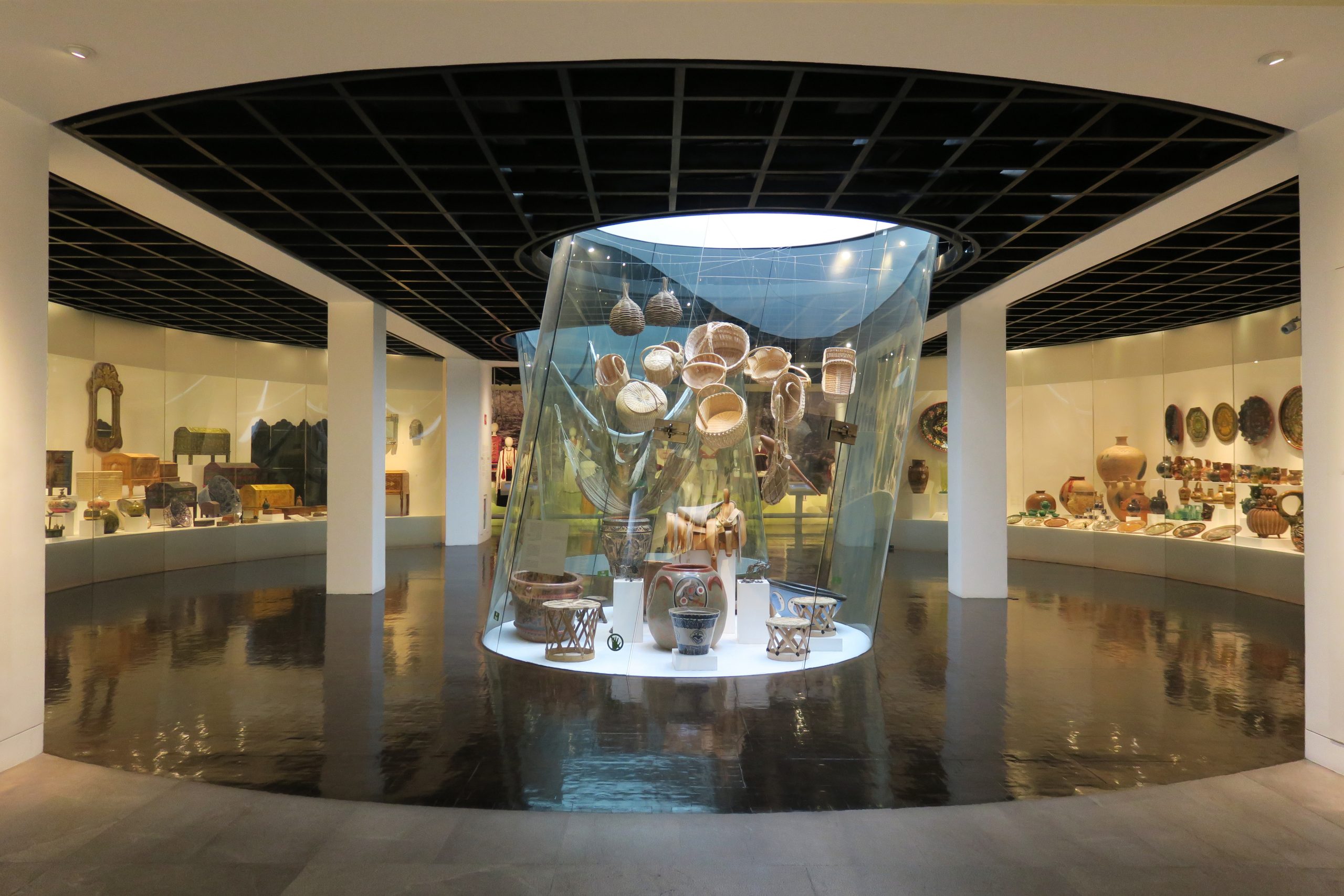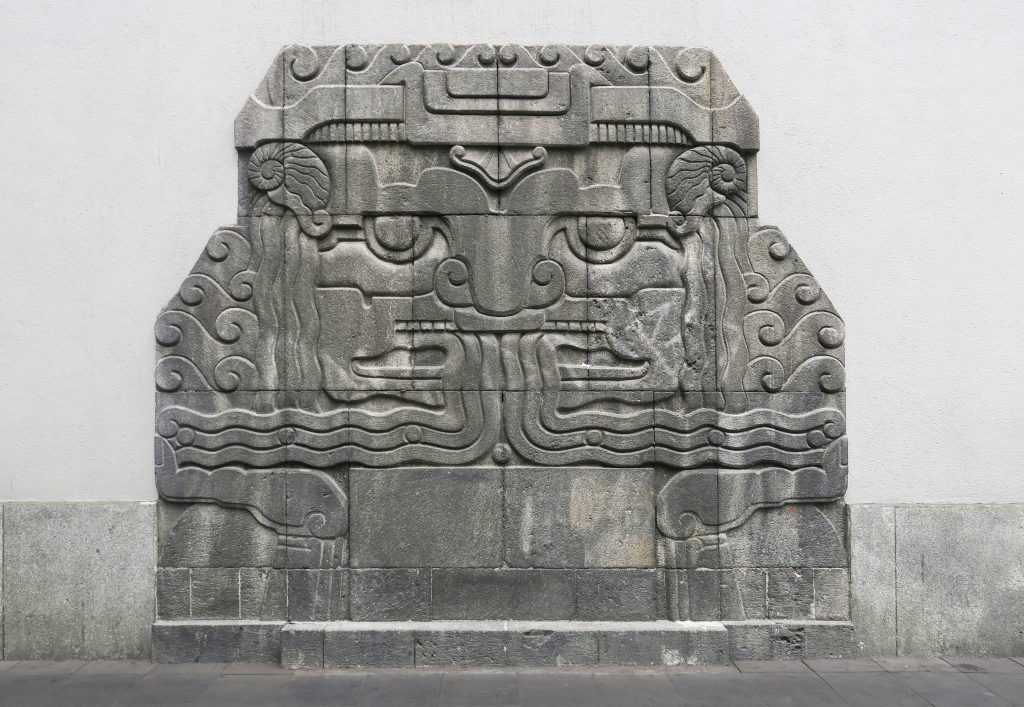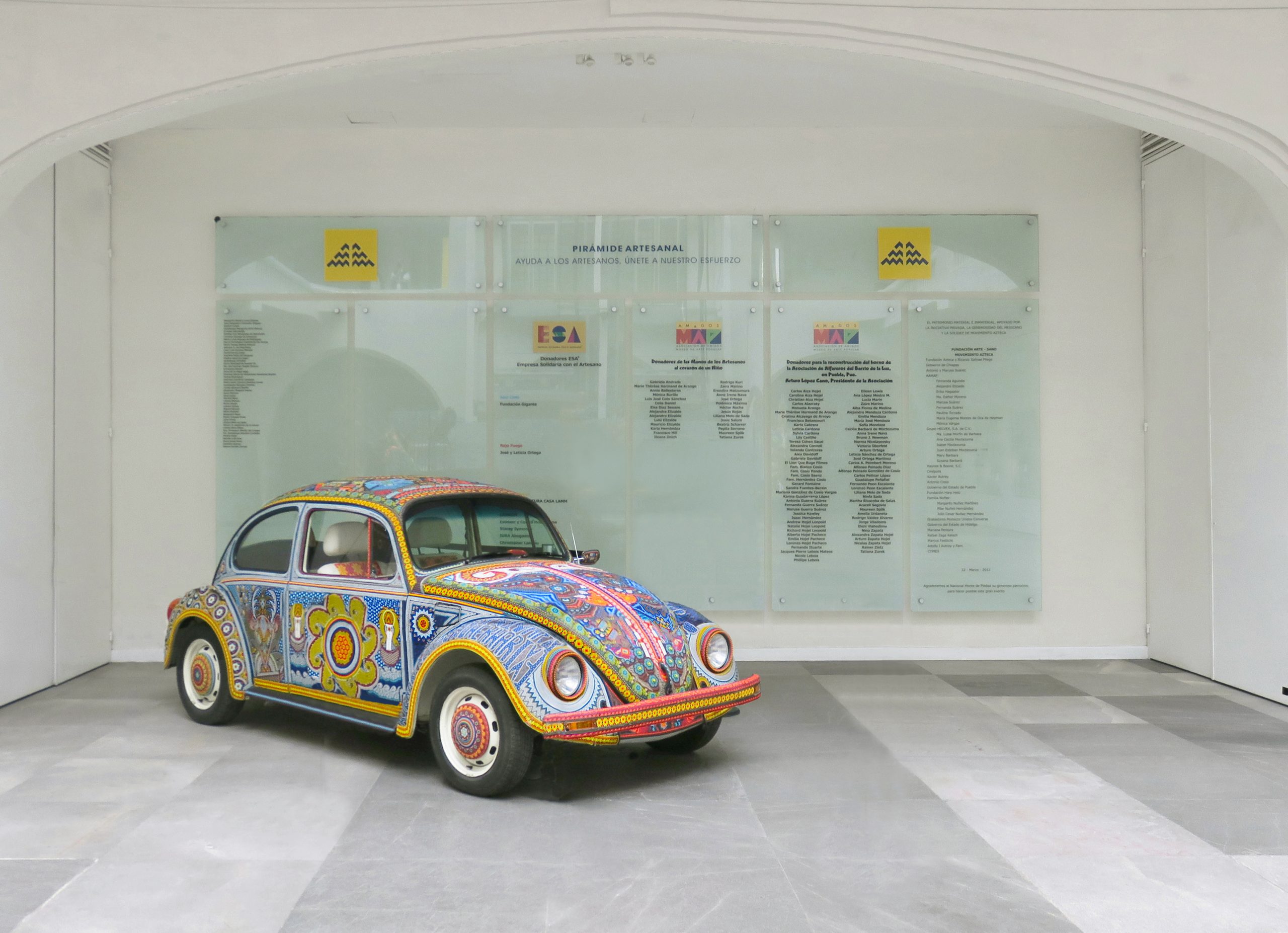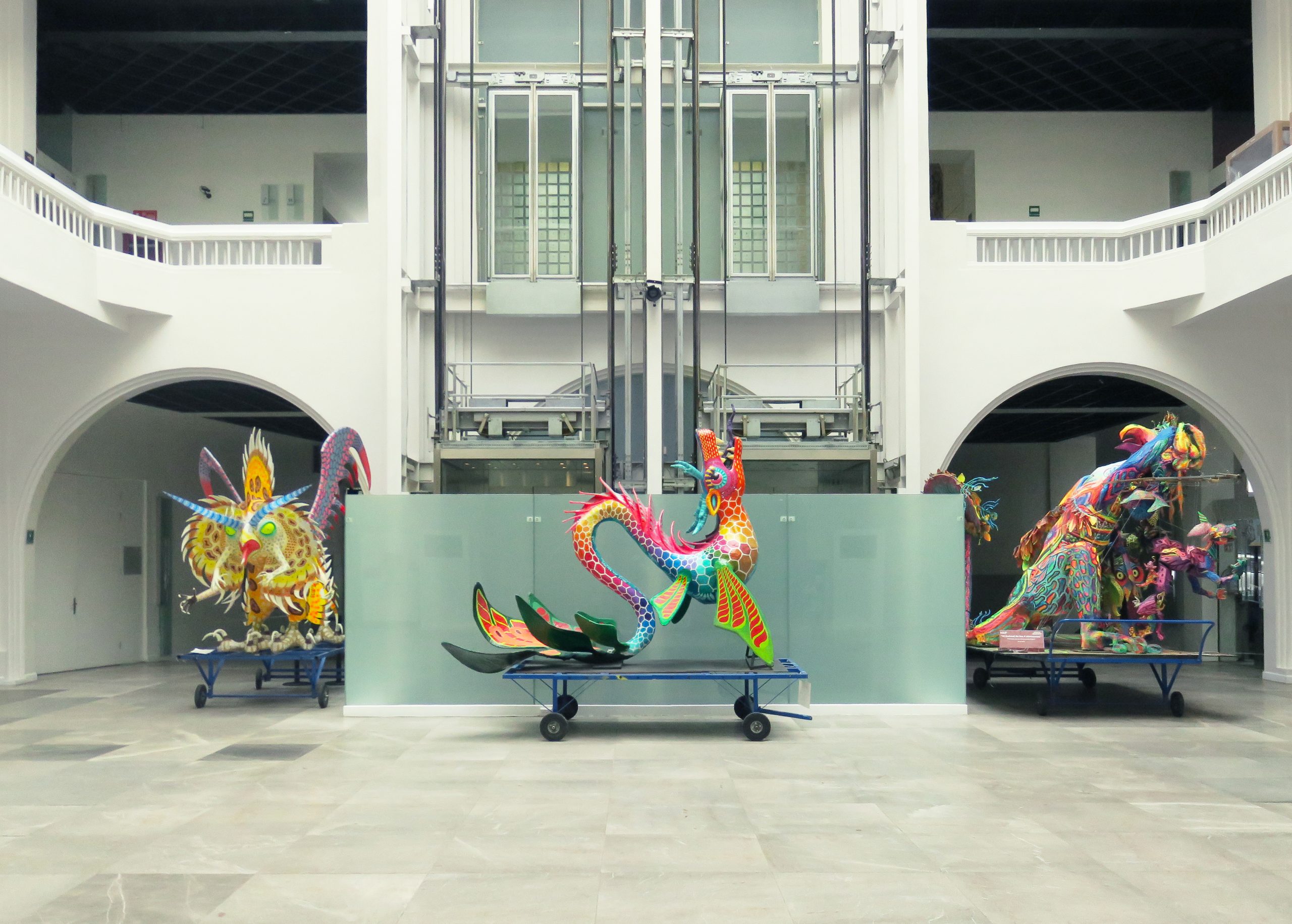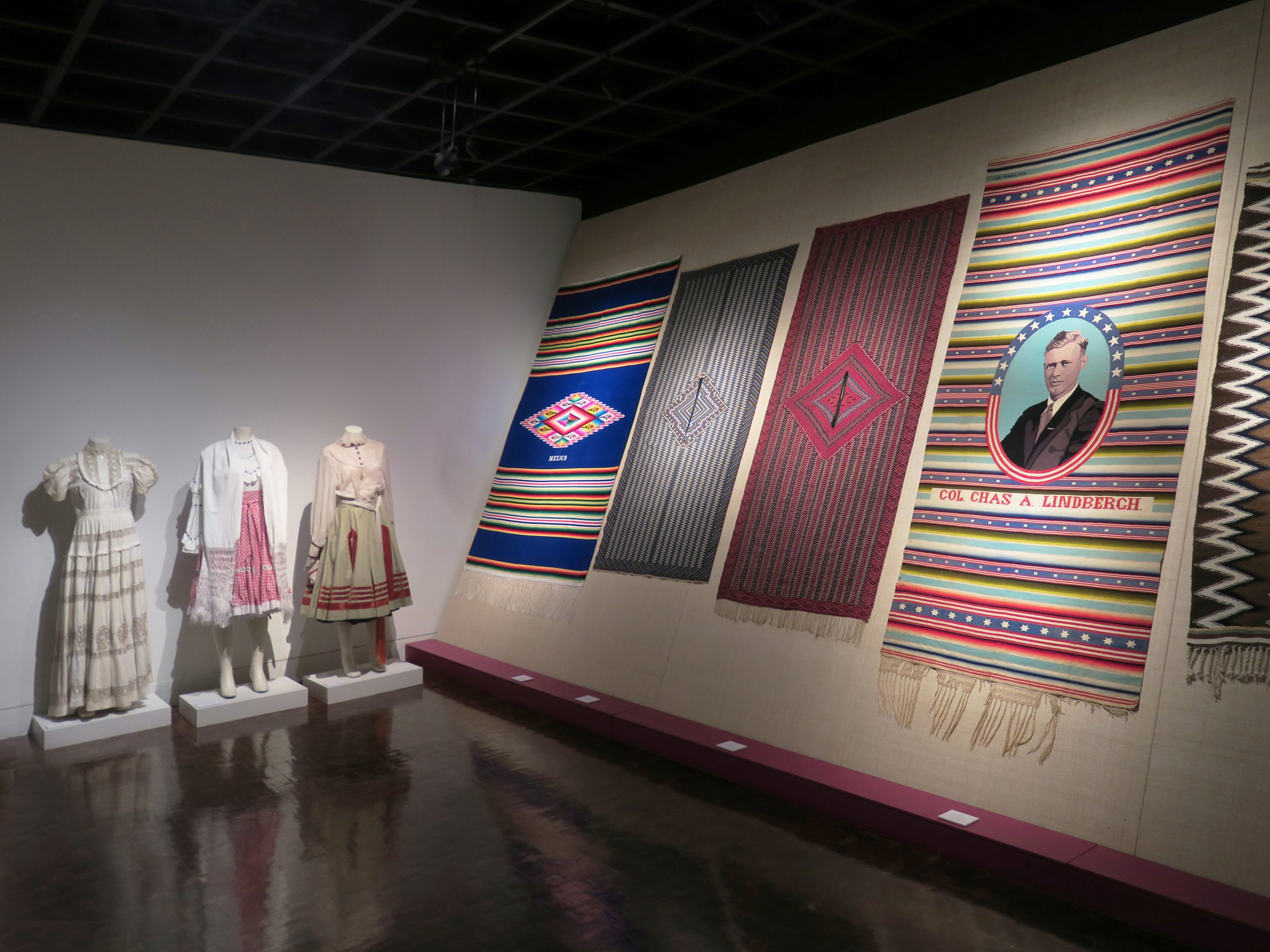On your way to Mexico City’s Museo de Arte Popular (Folk Art Museum, MAP for short) keep alert for a pair of Aztec revival bas reliefs by Manuel Centurion decorating the art deco firehouse that once served the city’s downtown. They make a perfect introduction to the ongoing conversation between the old and the new that is celebrated inside.
Just past the entrance is another reminder that artisans of every stripe continue to play a vital and vibrant role in shaping the culture of Mexico. It is the “volchol,” or Huichol Volkswagen, demanding — and rewarding — every particle of your attention. Not too long ago, Volkswagen Beetles converted into taxicabs jammed the city’s arteries at all hours of the day and night, but not one of them was anything like this. It is almost entirely covered with more than two million brilliantly colored glass beads patterned in the centuries-old avian, floral and geometrical designs beloved by the Huichol people of northern central Mexico.
Like many buildings in the area, the MAP is organized around an open patio. Depending on the season, you may see entries in one of the museum’s annual competitions, such as for kite or piñata making suspended from its balconies. Currently, fever-dream hybrid animals, “alebrijes,” decorated in psychedelic color schemes are displayed on the museum patio floor.
Make your way to MAP’s introduction to its collections on the top floor of the building. The display is organized around the narrative established by one of Miguel Covarrubias’s mural maps graphically portraying the varied ecological regions of Mexico with their associated peoples and products. It underlines the links that connect the makers to their land and their materials. The selection of artisanal handwork is presented in context of the mural.
The mural gallery recalls an earlier 1921 exhibition organized by European-trained Mexican artists. They included the finest artisanal wares they could find from every corner of Mexico to celebrate a century of its independence from Spain. But there is one notable difference. The organizers of the centennial exhibition packed its galleries floor to ceiling with objects, presenting them as If they were for sale in a rural marketplace. Here the pieces are given ample space to shine on their own as examples of individual achievement.
The following gallery, devoted to artisanal objects in daily life, spotlights one of the reasons why the nation’s popular arts still thrive. Inspired by the space that once housed the pole that allowed firemen to slide almost instantly from their barracks to the waiting pump engines, architect Jorge Agostoni created circular display cases that visually connect the museum’s galleries. In an echo of the introduction, a display of regional attire is backed by a panoramic photo mural that ties this clothing back to the varied environments for which it was created.
The next two galleries blend together. The first is devoted to syncretism, the blend of Catholic and indigenous beliefs that is an integral part of Mexican culture. The other is dedicated to the realm of the fantastical imagination of individual artists. A battalion of demons, intended to be burned as “Judases” on the Saturday of Glory before Easter Sunday, encapsulates the festive results of syncretism. Some of them are even clad in the distinctive boots of Mexico’s masked wrestlers, who regularly act out their ritual combats between good and evil in arenas a few blocks away.
Once relegated to anonymity, the artists who created these works are now named. From time to time their works even find their way to the MAP’s gift shop, but they never stay long. They are just as avidly collected as their counterparts with academic degrees.
Written by Mitch Snow and photographed by Paul Clemence.
Featured photo: Circular gallery bisected by diagonal display at Museo de Arte Popular

